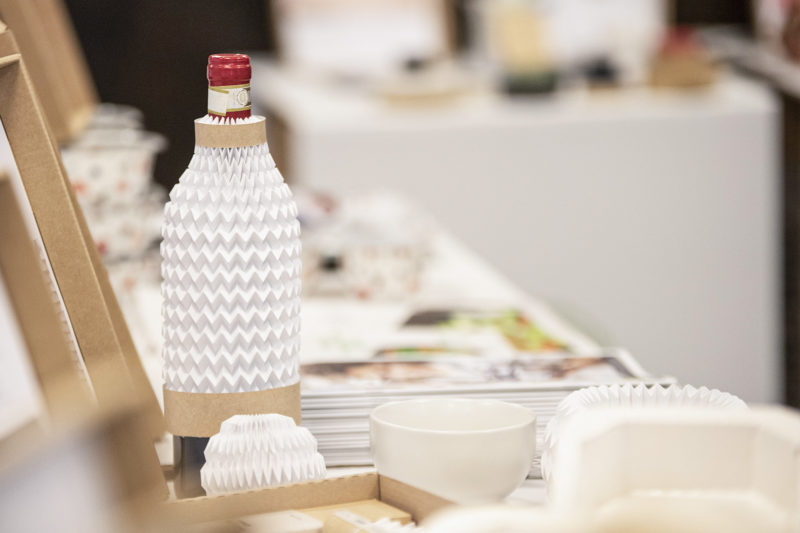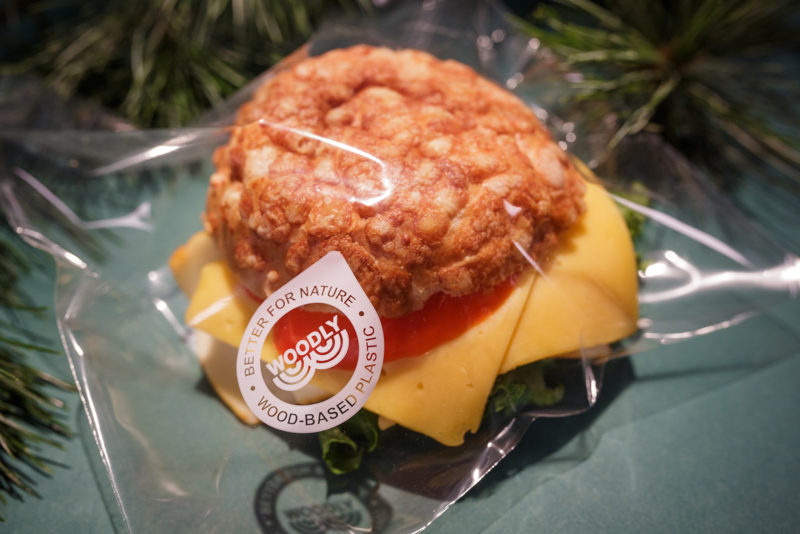
Renewable and biodegradable pulp is the source of many products that make life easier and more ecological.
Wood pulp is made of wood fibre, which is derived in connection of forest thinning from trees not up to the dimensions of logs. Besides these, it is made of sidestreams from the wood-processing industries, such as sawdust. Finland is known as a producer of long-fibre softwood pulp derived from spruce and Scots pine.
A durable material with long fibres, softwood pulp is suitable for most paper and paperboard products and for tissue papers, among other uses. It is used not only for strong materials, but also for hard, flexible and even transparent materials. In addition, pulp production sidestreams and nanocellulose are the source of more and more innovations that can replace fossil and chemical raw materials.
Pulp that has been cleaned and bleached resembles white cotton fluff.
1. Paper
Have you ever drawn pictures, read a book, leafed a newspaper or been given a handout at school or at your job? No doubt you have. In practice, we all have.

Even though digitalisation has reduced the production of paper, it is still among the most familiar products made of pulp and no one sees an end to its remaining in use.
2. Paperboard
Your latest online purchase may have arrived at your door or the pick-up point in a paperboard box. The box is made of pulp, and it is used to transport items that need to be protected during warehousing and transport: furniture, computers, shoes, crockery, toys, drills, telephones…
Paper and paperboard can be recycled 5–7 times, and then the wood fibre can still be used in energy production. Of the paper and paperboard consumed in Finland in 2020, almost 94 percent were recovered.
In That same year, the recovery rate of recycled paper in Europe as a whole was about 74 percent.
3. Food and beverage packaging
The appropriate packaging of food is important in order to cut down waste. Here, wood-based solutions can replace fossil-based plastics.
Pulp-based polymer is highly transparent. It can be used, for instance, to make a transparent wrapping for filled rolls or fresh herbs.
A lay person will see no difference between wood- and fossil-based plastics. Also, the EU does not classify wood-based plastics as single-use products, and so they have a wider range of uses.

Paperboard made of pulp is also used for food and beverage packagings, such as milk and juice cartons. Until now, the inside of beverage packagings has been coated with fossil plastics to prevent leaking, but thanks to the development of wood innovations, the food industry is moving into a no-plastics era.
4. Food additive
Wine is sometimes described as having woody notes, but many other comestibles do actually contain wood. Non-toxic and ecological, carboxymethylcellulose (CMC) is used, among other things, to ensure that ice-cream is smooth and delicious.

CMC is hygroscopic, meaning that it attracts and holds water. As such, it is found in foods like ketchup, frozen baked goods and pre-cooked dishes, but it has hundreds of other uses. If you would like to check your fridge for the presence of wood pulp, look for the most common E codes for CMC, which are E466 and E468.
Read more: CMC is maybe the least known forest product – despite having hundreds of uses
5. Toilet paper
We all need to use the toilet. Some of us may prefer to use water instead of paper to clean up, but using two to three sheets of toilet paper is probably more likely. A Finn’s average annual use of toilet paper at home is 60 rolls, while that of a German is as many as 134 rolls.
When the weather turns colder, you may find yourself sneezing. It is likely that you then blow your nose on a tissue made of pulp, which will be gentle to your skin and ecological. The Finnish Institute for Health and Welfare recommends you to throw away the tissue after use to prevent contagion, though on the other hand, you cannot make yourself feel any worse by using the same tissue twice.
The absorbency of pulp is also useful in incontinence and menstruation pads and baby nappies. The latter are consumed by the bagful in families with little children, or an estimated 5–10 pieces per day, depending on the child’s age.
6. Clothing
Do you worry about the ecological burden from synthetic fibres and cotton? Textile industry is one of the least ecological industries in the world.
People have known how to make fabric (rayon or viscose) from wood for over a hundred years, but the process requires plenty of water and toxic chemicals. Consumers are calling for more responsible materials, while the demand for cotton is growing.

A solution to this are the new generation of Finnish wood fibres, which come from certified forests and whose production requires no chemicals. And – you guessed it – they are made of pulp. They can be used to make beautiful, durable and more ecological garments.
7. Medical products
The absence of impurities, biological compatibility and absorbency are some of the reasons why pulp is used in medical products.
There are numerous uses for it: medical dressings and gauze, toothpaste additives, pharmaceutical packagings, respiratory masks, surgical clothing, components for pregnancy test kits, laboratory utensils, filter material for dialysis, and plaster used for fractures.
Read more: ECG patch made of nanocellulose can be recycled
8. Construction materials
Do you like wooden houses? Do you prefer furniture made of wood? Or would you like to use renewable chipboard in your home, instead of plasterboard based on gypsum from a mine?
Pulp can be used for construction materials, such as medium-density fibreboard (MDF) and chipboards, all of which are used in construction and for furniture.
